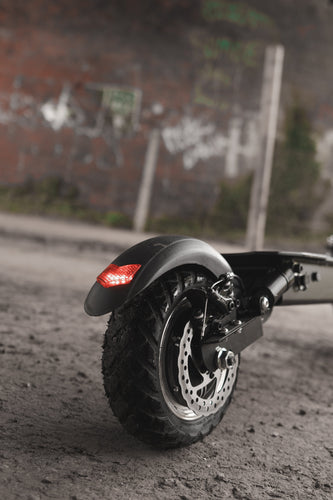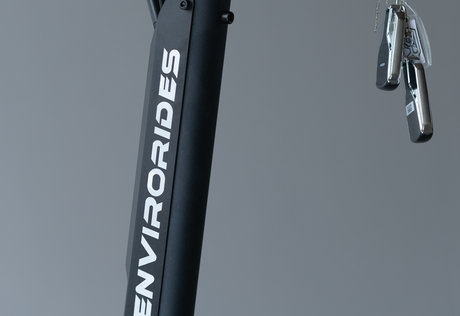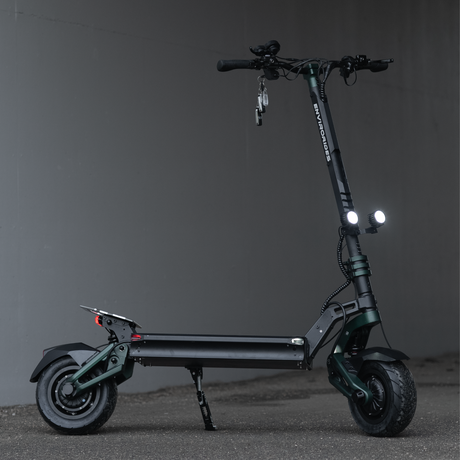When it comes to eBikes, customers often have numerous questions about their lifespan and durability. The primary concern revolves around the question, "How long does an electric bike last?" This typically refers to the battery's range, but people also want to know when they will need to replace the battery or other components.
In this blog post, we will delve into the factors influencing eBike longevity and provide valuable insights. Specifically, we will focus on the average urban/hybrid, commuter-style eBike, considering its main components, including the battery, motor, brakes, chains, gears, and tires. Let’s do this…
eBike Range
One of the most frequently asked questions is about the eBike's range. Determining the exact range can be challenging as it depends on various factors such as rider weight, eBike motor, weather conditions, terrain, battery size, and more. For example, our eBikes all have an average range of 50-55 miles. For a more accurate estimation of range, Bosch has a neat mileage calculator.
eBike Battery Longevity
A typical Lithium-ion battery can endure approximately 500 charge cycles before its capacity starts to decline, resulting in reduced range. This lifespan generally translates to 3-5 years. However, we have seen instances where batteries have lasted significantly longer, even nearing 10,000 miles. Over time, the battery will require more frequent charging, leading to diminished range.
Similar to other electronic devices, such as mobile phones or computers, it's crucial to take care of your eBike battery. Replacement costs can be substantial, currently reaching up to £800 each. Avoid exposing the battery to extremely cold temperatures, as this can permanently damage the battery cells. During winter months when the bike is not in use, store the battery indoors at room temperature, maintaining its charge level between 30% and 60%.
Even when actively using the bike, it's advisable to store the battery indoors and only attach it when needed. To provide additional protection, you can purchase covers to keep the battery warm and secure while mounted on the bike.
eBike Motor Reliability
eBike motors are generally highly reliable and require minimal maintenance. However, it's essential to exercise caution when dealing with water. Avoid using a pressure washer on the motor or riding through deep rivers to prevent any potential damage. In the rare event of a manufacturing fault, the motor is typically covered under warranty and can be replaced without any issues. In most cases, the motor is likely to outlast many other components of the eBike.
eBike Brake Pads
A well-maintained set of disc brakes on an eBike can be expected to last for over 2000 miles. However, brake pad longevity depends on your braking habits. Aggressive or frequent braking can significantly impact their lifespan. Additionally, riding downhill regularly will also affect wear and tear rates. Cycle sensibly, and your eBike will thank you.
eBike Chains
On average, an eBike chain should be good for 2-3k miles. However, this estimate can vary based on factors such as the motor type and riding style. Commuter eBikes often reach distances of 3.5k miles or more before requiring a chain replacement. It's worth noting that leaving your bike outside, exposed to the UK winter, will accelerate chain rusting and reduce its lifespan. To ensure longevity, the chain should be adequately protected from the elements.
eBike Gears
Gears on eBikes can experience wear over time, just like other components. If a chain stretches, it can cause damage to the gears' cogs. In derailleur systems, this may not be a major issue as you can switch between gears, but the front cog will likely need replacement along with the chain. In some cases, the derailleur gears, also known as the cassette, may need to be changed as well.
eBike Tyres
The lifespan of eBike tyres can vary depending on factors such as the type and quality of the tyres chosen. On average, a set of tyres can last anywhere from 3000 to 5000 miles. The rear tyre tends to wear out faster due to the additional strain it experiences. Of course, this depends on the type of terrain you’ll be riding on as well as your average speeds. In this case, your mileage will vary. Literally.
Overall Lifespan
With regular maintenance and proper care, you should expect your eBike to last as long as a regular bike would. In fact, with meticulous attention to maintenance, it can serve as a reliable mode of transportation for over 10 years. Over time, you may need to replace components such as tyres, chains, and brake pads, as well as invest in a new battery. However, these costs can be minimized through simple maintenance practices like lubricating the chain and scheduling an annual check-up at your local bike shop.
For the average leisure user, the expenses associated with battery or motor replacement are unlikely to be a concern. Those who use their eBikes for daily commuting and rack up significant mileage should factor in these costs more carefully.
In conclusion, the longevity of an eBike depends on several factors, including the battery, motor, brakes, chains, gears, and tyres. While the specific lifespan of each component can vary, proper maintenance and care can significantly extend the overall lifespan of your eBike. By adhering to maintenance practices and protecting your eBike from harsh weather conditions, you can enjoy years of reliable and efficient transportation.
Remember, the investment in replacement parts is relatively minor compared to the number of miles you'll cover with your eBike. For consistent daily use, it's advisable to consult with your local bike shop for a more detailed maintenance schedule. By taking care of your eBike, you'll ensure it lasts for many enjoyable rides to come.



